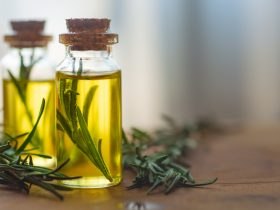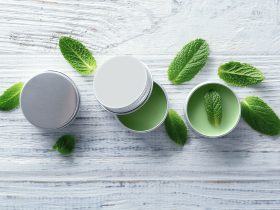Squalane may not receive as much attention as hyaluronic acid and ceramides, but it’s a powerhouse moisturizer worthy of recognition. For those unfamiliar with squalane and its uses, this article serves as a quick introduction.
Experts unanimously agree that squalane is highly hydrating and suitable for even the most sensitive skin types. Dermatologists highlight the multitude of benefits associated with squalane, discuss how to determine if it’s suitable for your skin, and offer tips on integrating it into your skincare regimen.
What Is Squalane?
Squalane is a derivative of squalene, a natural compound found in the skin’s sebum. While squalene is prone to oxidation and has a shorter shelf life, squalane is a more stable form of this compound, making it suitable for use in skincare products.
To produce squalane, hydrogen atoms are added to squalene through a process called hydrogenation. This modification increases the stability and shelf life of the compound, making it less susceptible to oxidation and degradation.
Squalane shares many of the same skincare benefits as squalene. It is an excellent emollient, helping to hydrate and soften the skin without leaving a greasy residue. Squalane is also lightweight and non-comedogenic, making it suitable for all skin types, including sensitive and acne-prone skin.
In addition to its moisturizing properties, squalane has antioxidant properties, which help protect the skin from oxidative stress and environmental damage. It can also help improve skin elasticity and reduce the appearance of fine lines and wrinkles.
Squalane is a versatile ingredient commonly used in skincare products such as moisturizers, serums, and facial oils. Its lightweight texture and compatibility with other skincare ingredients make it a popular choice for enhancing the overall effectiveness of skincare formulations.
Benefits of Squalane
Squalane has many benefits for skin health, including:
- Supports Your Skin Barrier
Squalane can effectively support your skin barrier, especially if you’re experiencing dryness. One of its most notable benefits is its ability to strengthen the skin barrier, a well-researched aspect of its efficacy.
Acting as an emollient, squalane hydrates the skin by helping to retain moisture. It achieves this by penetrating the spaces between skin cells and fortifying the outer layer, thereby reducing water loss through evaporation.
Additionally, squalane stands out for its non-comedogenic properties, meaning it doesn’t clog pores. This makes it an ideal lightweight option for individuals prone to acne or those who prefer a non-greasy feel on their skin.
- May Reduce the Appearance of Wrinkles
Although the precise scientific evidence supporting its claimed benefits in reducing wrinkles is not yet fully established, squalane has garnered attention for its potential to diminish the appearance of fine lines and wrinkles.
Dry skin tends to accentuate the visibility of wrinkles, and as individuals age, their skin naturally produces fewer oils, including squalene. Consequently, using skincare products infused with squalane, such as serums or lotions, can help replenish moisture levels in the skin.
This hydration can contribute to a smoother and more supple complexion, making wrinkles appear less noticeable over time.
While further research is needed to fully understand the mechanisms involved, many users report positive results from incorporating squalane into their skincare routines.
- It Can Calm Down Itchy Skin
Squalane offers a ray of hope for those struggling with irritatingly sensitive skin. Its low likelihood of causing irritation makes it a favorable choice for individuals seeking gentle skincare solutions.
Moreover, its ability to support the skin barrier can provide relief for certain symptoms of eczema, such as dryness, cracking, and flaking.
While squalane is not considered a formal treatment for eczema, it can offer temporary relief and comfort. In a study involving individuals with uremic pruritus, a condition characterized by itching due to chronic kidney disease, the use of a squalane-containing gel demonstrated improvements in dryness and the urge to scratch.
However, it’s important to note that this study had limitations, including a small sample size and the presence of other ingredients in the gel.
Therefore, while squalane shows promise as a potential remedy for itchy skin, further research is needed to fully understand its efficacy and mechanisms of action.
Consulting a dermatologist for personalized recommendations remains the best course of action for managing skin conditions like eczema.
- May Help with Acne
Squalene, a component of sebum, can exacerbate acne if present in excess. Therefore, individuals with oily skin prone to breakouts should exercise caution when considering the use of squalane, as their skin may already produce ample sebum.
Moreover, research suggests that squalene may naturally contribute to the development of acne, implying that additional application of squalane may not be advisable.
However, squalane can be particularly beneficial for those with dehydrated and acne-prone skin. When acne is accompanied by symptoms of dryness, itchiness, or flakiness, it may indicate underlying skin dehydration.
In such cases, squalane can provide hydration without irritating, effectively addressing both dryness and acne concerns. This makes squalane an appealing option for individuals seeking to manage these dual skin issues simultaneously.
Nevertheless, you should note that there are differences between hydration and moisturization for your skin and knowing them can help choose the best products for your skin type and needs.
How to Use Squalane
Incorporating squalane into your skincare routine is straightforward and versatile. Squalane can be safely combined with most other skincare ingredients, including potent actives like retinol and niacinamide. However, there are a few factors to keep in mind:
- Moisturizing Frequency: If you have dry skin, consider using a moisturizer containing squalane twice a day, particularly during the winter months when skin tends to be drier.
Moisturizers, being more hydrating than serums, are recommended for those with dry skin.
However, if your skin is on the oilier side or during humid weather, moisturizing once a day or opting for a serum may suffice.
- Application Order: When using a squalane serum, it’s advisable to incorporate it into your routine as one of the final steps, following cleansing but preceding moisturizer application.
This is because squalane is a lipid, possessing a thick consistency that effectively seals in moisture.
Consequently, it helps to lock in the benefits of previous skincare products while forming a protective barrier against environmental pollutants, dirt, and makeup residue.
By following these guidelines, you can seamlessly integrate squalane into your skincare regimen, harnessing its hydrating and protective properties for healthy, radiant skin.
















Find Us on Socials